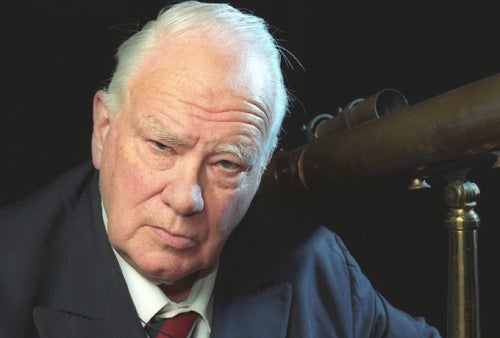Exploring the Night Sky with Binoculars (1986)
This book strikes you with the kind of enthusiasm that makes the first year or 2 of observing the stars so special. It captures the thrill of discovering what objects look like when you’re not yet sure how they will appear.
Astronomy Encyclopedia (2002)
This book is a handy reference for astronomy newcomers and for young people, especially. Sprinkled throughout its pages are colorful illustrations. The writing is concise and accurate.
Atlas of Uranus (1989)
After you read this book, you feel you’ve come away with a thorough understanding of the title planet. It summarizes the Voyager mission’s accomplishments.
Atlas of Neptune (1984)
An analogous volume to Atlas of Uranus, this book provides an enriching and entertaining look at Neptune. The Voyager results are the emphasis, and the imagery and graphics are superb.
Stargazing (2000)
This quality introduction to the hobby emphasizes naked-eye observing. It provides a month-by-month guide to the constellations and how to locate them. This book makes an excellent gift for a young person just getting interested in the stars.
The Guinness Book of Astronomy (1979)
This book features great historical sections that review the milestones of astronomical research. Included in this reference book are short biographies of celebrated astronomers.
Of the 20 Patrick Moore books I own, my favorites are Astronomers’ Stars (1987), The Astronomy of Southern Africa (1977), and Brilliant Stars (1997). I like these books because they’re either not the ordinary, run-of-the-mill astronomy books or they cover aspects of these subjects you won’t find in other books. Moore’s books are wonderful sources of astronomical trivia.
The Craters of the Moon: An Observational Approach (with Peter J. Cattermole, 1967)
This book appeared at about the last possible moment when you could publish an argument for volcanic origins of lunar craters. It is an important book for learning about early, somewhat unfounded, theories concerning the Moon.
Can you Speak Venusian? A Guide to the Independent Thinkers (1972)
This delightful book finds Moore spending time with various oddballs — flying-saucer cult devotees, flat-Earthers, hollow-Earthers, Velikovskians, etc. He takes them all seriously enough to let them argue their cases, but he does ask sharp questions few of them can answer. It’s a wonderful tour of rationality’s borderlands.
The Moon (with H. Percy Wilkins, 1955)
Moore’s excellent descriptions of the Moon are accompanied by a huge, somewhat inaccurate, map by Wilkins in this book. Moore’s descriptions, of course, take for granted that craters are volcanoes, but that was a more mainstream idea around 1955 than it would be a decade later. Wilkins and Moore’s The Moon is the last in a series of big books with lunar maps and eyeball telescopic descriptions that came from English authors. Each had the same short title. The others are by Edmund Neison (1876), Thomas Gwyn Elger (1895), and Walter Goodacre (1931).










